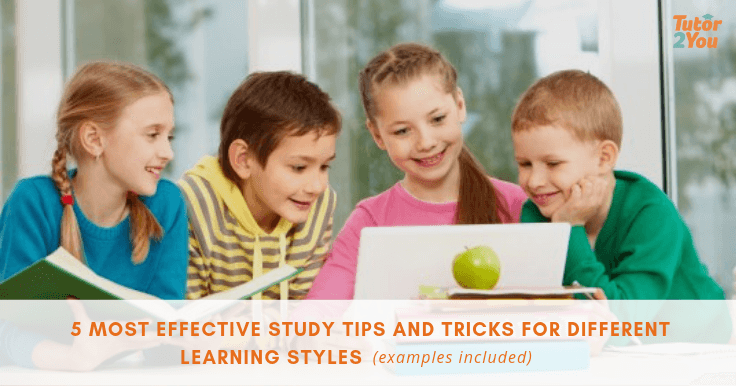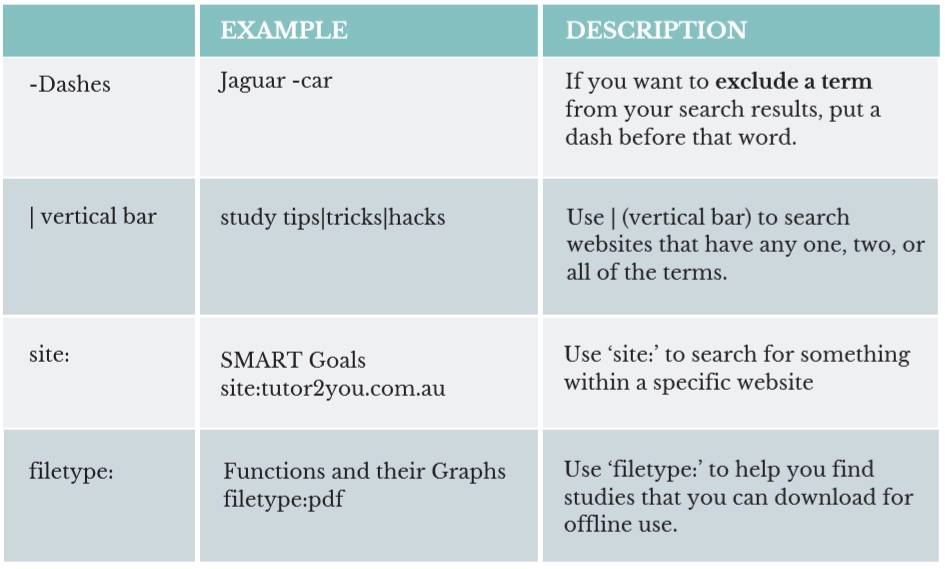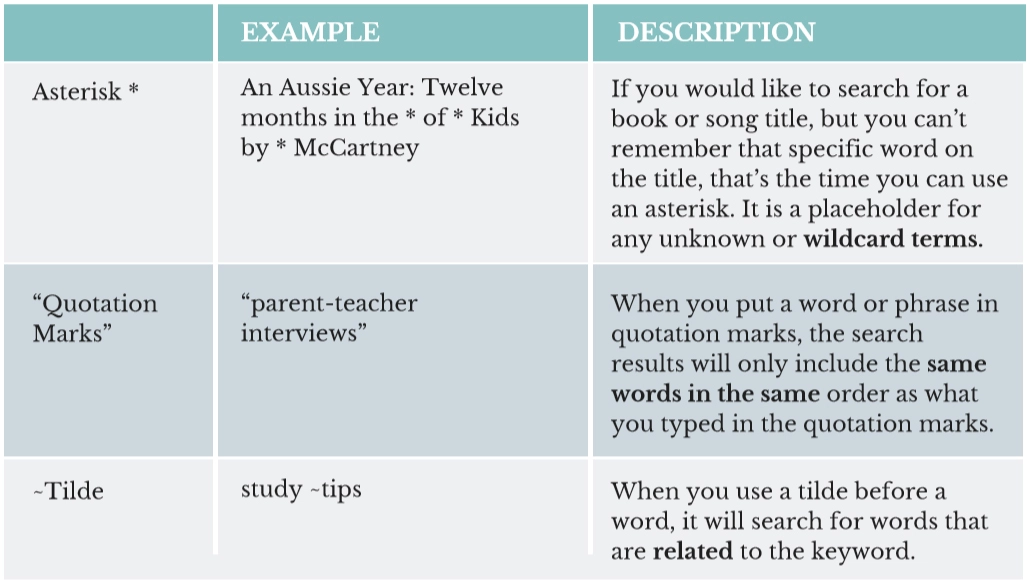
5 Most Effective Study Tips and Tricks for Different Learning Styles
Make Learning Fun
Are you looking for ways to study better and faster while having fun? In this article, we discuss the most effective study tips and tricks for different learning styles.
1. MEMORY TRICK - USE MNEMONIC DEVICES
Mnemonic devices or simply mnemonics are memory techniques that help you to remember information in an interesting way. They help you improve your ability to remember easily by associating the information with images, objects, words, or place.
The most effective mnemonic devices are the method of Loci, acronyms, acrostics, and music mnemonics. They are proven to be effective that you can still recall them several years after.
The Method of Loci (for Visual-Spatial and Kinaesthetic Learners)
The method of Loci or mind palace is one of the oldest memory techniques. The TV series Sherlock featured this technique, where the famous detective, Sherlock Holmes, uses mind palace to solve problems.
How does it work? Imagine a place that you are familiar with like your house, classroom or school. Then, assign the words or names that you want to memorise to each object in your house or school. It helps to make the association as interesting as possible.
Let’s say you need to memorise the noble gases in the periodic table of elements. The objects in your classroom are the teacher’s chair, window etc. The first noble gas is helium, so we’ll imagine the teacher’s chair having balloons with helium. Next is the window with neon lights to remember the second noble gas, which is neon. Then pick another object and assign it to the third noble gas.
The process continues until you assign all noble gases to specific objects in the classroom. So, when you need to recall the noble gases, look at the teacher’s chair then you remember helium, the window for neon etc.
This technique is also useful when dealing with a series of events.
Acronyms (for Linguistic Learners)
An acronym is a word formed by taking the first letter of each item to be remembered. You probably have heard of “Roy G Biv” and certainly know that it is not the name of a famous person. ROY G BIV stands for the seven colours of the rainbow, which are red, orange, yellow, green, blue, indigo and violet.
Examples:
Parts of Speech PAVPANIC
Pronouns, Adjectives, Verbs, Prepositions, Adverbs, Nouns, Interjections and Conjunctions
Order of Operations PEMDAS
Parentheses, Exponents, Multiplication/Division, Addition/Subtraction
Coordinating Conjunctions FANBOYS
For, And, Nor, But, Or, Yet, So
Trigonometric Functions SOH CAH TOA
Sine=Opposite/Hypotenuse, Cosine=Adjacent/Hypotenuse, Tangent=Opposite/Adjacent
Acrostics (for Linguistic Learners)
An acrostic is a phrase or sentence in which the first letter of each line spells out a word.
Examples:
Planets in the Solar System in Order from the Sun
My Very Educated Mother Just Served Us Nachos
(Mercury, Venus, Earth, Mars, Jupiter, Saturn, Uranus, Neptune)
Or My Very Educated Mother Just Served Us Nine Pizzas (including Pluto)
Points of the Compass
Never Eat Soggy Weetbix
North, East, South, West
Notes on the Lines of the Treble Clef
Every Good Boy Does Fine
EGBDF
Order of Sharps for Music Key
Father Charles Goes Down and Ends Battle
F#, C#, G#, D#, E#, B#
Seven Major Levels of Classification
Kids Prefer Cheese Over Fried Green Spinach
Kingdom, Phylum, Class, Order, Family, Genus, Species
Seven Major Levels of Classification
Please Excuse My Dear Aunt Sally
Parentheses, Exponents, Multiply, Divide, Add, Subtract
Rhymes and Songs (for Auditory-Musical Learners)
Music can also help you to remember information. It is the rhythm which makes it easier to recall details. Teachers often use music to attract and help students to remember key points. You can also make your songs or jingles by putting the information into a tune. The most popular is the ABC song which is based on the tune of the nursery rhyme: “Twinkle, Twinkle Little Star”.
Example
The number of days in the months of the calendar.
30 Days Has September, April, June and November, All the rest have thirty-one, But I think February’s great, It’s the one with twenty-eight, And to make it crystal clear, Twenty-nine in a leap year. (You can check the tune made by Easy Peasy Plays here.)
Did You Know?
You can use the knuckles of your hand to distinguish which month has 31 days? We call it “Knuckle Mnemonic”. Each knuckle represents a 31-day month.
Develop a technique that will help you remember the things you have learned. You can either create your mnemonics or discover existing mnemonics that works for you. There are tons of mnemonics available on the internet.
2. CREATE A MIND MAP (for Visual-Spatial Learners)
Do you want to make your notes available on one page? Then, mind mapping is for you.
Mind mapping applies to all kinds of activities and all subjects. Mind maps are visual representations of concepts on any topic. They are most useful when taking notes during class and brainstorming for a presentation. Mind map works like the brain works. It combines words, images, lines and colours to organise and summarise complex information on only one page – the reason why this method is popular among professionals. It is a great tool to improve your memory and retention effectively.
Source: www.mindmeister.com/blog/why-mind-mapaping
Students need to understand the concept of mind mapping to be able to appreciate its benefits. So, here’s how to do it.
- Take a piece of paper.
- Write down the main topic in the centre.
- Identify sections of the topic. Sub-topics radiates from the centre.
- Write down the keywords and key phrases associated with the topic which will serve as the branches of the map.
- Establish the connections between these words, phrases or images.
- Remember to use colourful lines to connect one idea from the other.
Making a mind map enhances creativity and productivity. It is not merely writing for the sake of having notes - as you make your map, you are already analysing information. We all learn differently, so your map differs from another person’s map even if it’s from the same topic. Start mind mapping, and you’ll be surprised how great this would help you.
3. PREPARE YOUR OWN FLASHCARDS (for Visual and Auditory Learners
Flashcards are for everyone!
Flashcards apply to all ages and all types of learners. They are great tools to practice vocabulary, remember historical dates, test arithmetic skills, learn a foreign language and anything that involves memory. Visual learners can include pictures, and auditory learners can say the question and answer aloud to help them remember the information. Also, flashcards are flexible tools that can be studied alone or with a group by both children and adults.
There are a variety of ways to make your flashcards. The basic format for flashcards is the two-sided: one side asking the question and the other side for the answer. Vocabulary flashcards contain a keyword side and a definition on the other. The basic materials are index cards and markers. You don’t have to spend a lot of money to make them.
The benefits of using flashcards
- They are a tool to memorise and understand concepts.
- They help increase children’s attention span.
- They help build concentration among kids.
- They are a playful means to engage children to concepts.
- They help discover your weaknesses on a particular topic.
- They are useful for a quick study session.
- They are available in either physical or digital. Physical flashcards are easy to make, and digital flashcards are readily available on the internet.
Online tools
If you prefer digital flashcards, you can check out these sites to create or find decks of flashcards for all your classes.
Brainscape www.brainscape.com
It has an advanced editor where you can insert pictures, sound and other features to your cards.
Cram.com www.cram.com
It provides different ways to study with the flashcards such as quiz yourself and play a game. Also, it has apps for both Android and iOS for free.
Flashcard Machine www.flashcardmachine.com
It gives you the option to print, export and review your deck. It also offers apps for both Android and iOS so you can study wherever you go.
Play "Flip & Reveak" with two-sided flashcards
- Spread the flashcards on a table.
- Start on whichever card you want to answer first.
- Read the question or describe the image before flipping and revealing the correct answer.
- Say your answers out loud.
- Have two boxes and label them as correct and wrong answers.
- Take a break, then review the incorrectly answered cards.
Engage kids to play games with flashcards like Flip and Reveal. When playing the Flip and Reveal game, let your kids flip the cards on their own and encourage them to read the question and answer out loud to remember the information better. Draw two thumbs up on the correct answer box and one thumb up for the wrong one, instead of writing “correct” and “wrong” on the box.
Use flashcards effectively by following these tips.
- Use the Leitner system when reviewing with flashcards. It is a method which uses the concept of spaced repetition.
- Don’t put several facts in one flash card.
- Use one flashcard for each question.
- Add (or draw) pictures on the cards to make it more memorable
- Review them with a buddy
4. QUICK TRICKS
Here are tricks that you should know to boost your productivity.
- Say things out loud - Research has shown that reading information out loud helps students to learn faster than by reading silently.
- Teach what you’ve learned - A better way to test what you know is to teach someone what you have learned. Teaching shows a better understanding and knowledge retention.
- Use the Times New Roman font - The fastest font to read is the Times New Roman.
- Use scents - Research has shown that smells trigger memories better than sound. Spray a perfume with an unfamiliar scent while memorising a piece of information, then respray it on the day of your exam to help you recall the information.
- Chew gum - Chewing gum has the same effect as spraying perfume. Also, chewing gum makes reading faster.
Online tools
WolframAlpha - www.wolframalpha.com
If you would like to know other ways of solving math problems, use WolframAlpha. It shows step-by-step solutions to any maths problems. It also has a section for Science & Technology, Society & Culture, and Everyday Life.
Forest – www.forestapp.cc
If you want to limit the use of your phone, download the Forest app. Forest is an app helping you stay away from your smartphone and stay focused on your work. Whenever you want to focus, plant a tree. Anytime you leave the app; it will tell you to go back to Forest immediately to prevent the tree from dying.
5. GOOGLE SEARCH TRICKS
Google is a powerful learning tool available to students today. Everyone uses Google. However, only a few know how to use it efficiently. If you want to find the exact information that you’re looking for, then use these tricks.


You can combine two or more of these tricks to find more relevant results. For example, “site:edu essential mathematics exam filetype:pdf” if you’re looking for downloadable Essential Mathematics practice exams.
It is challenging to stay engaged and motivated in studying. The good thing is that we can improve our capacity to use our mind. If you find yourself having struggles, practice these tricks to discover which are both fun and effective for you. Explore learning strategies to find something that would suit your learning style and preference for maximum learning effectiveness.
Contact Tutor2you to get in-home tutors to prepare personalised instructions that match up with the student’s learning style and needs.



